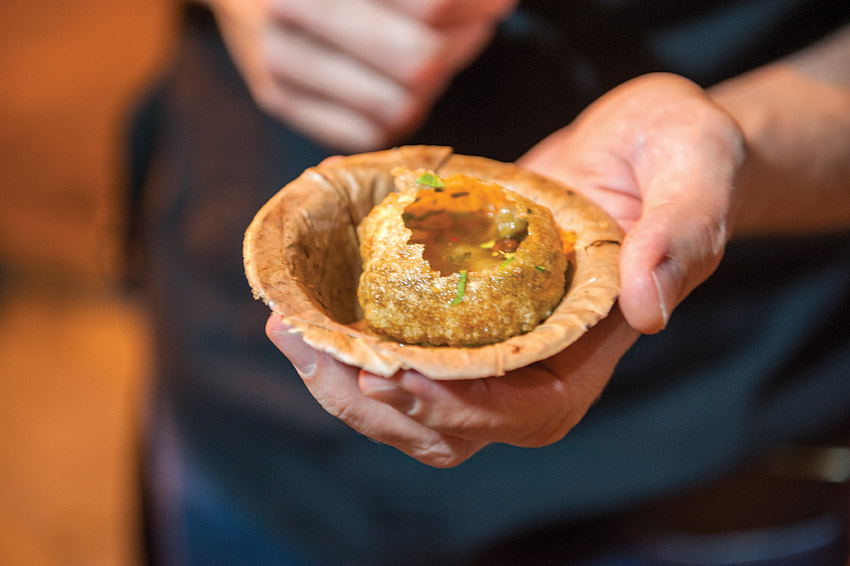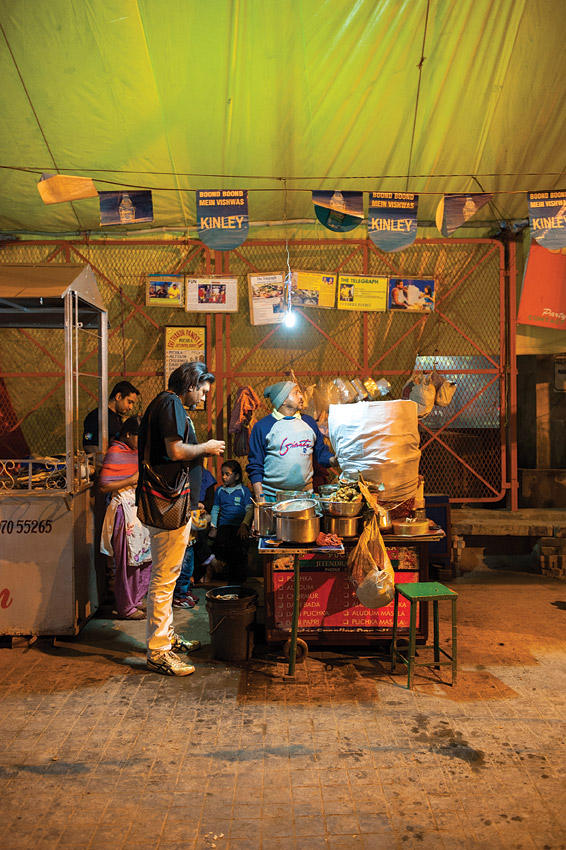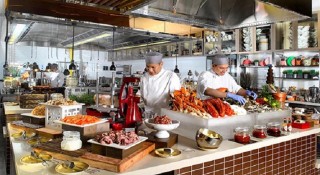For me, the most defining element of Bengali cuisine is the liberal, almost profuse, use of whole-grain mustard. At Kewpie’s, the condiment is added to almost everything—stirred into a light and tangy pumpkin curry, smothered on top of locally caught hilsa (a firm-fleshed river fish), and mixed with sweet mint sauce as a dip for crumbed cutlets of minced banana flower (mochar chop). While Dasgupta and her friends disagree, Anand maintains that there is no doubting the source of this mustard mania, or of the Bengali tradi-tion of eating in courses and coating fish and cutlets in bread crumbs: Britain.
It was a humid afternoon in August, 1690, when Job Charnock, an intrepid administrator with the British East India Company, established a colony on a bend in the Hooghly River and called it Calcutta, after the nearby settlement of Kolikata. Evolving into an affluent trading port and later the capital of British India, Kolkata grew to be the most important and cosmopolitan city in India, with a wealth of grand, imposing buildings and a multicultural population that included a hodgepodge of Armenians, Jews, Persians, and Chinese, all of whom have left a culinary imprint on the city. Kolkata continued to grow after the Raj moved its capital to New Delhi in 1911, but the repercussions of partition devastated the city’s economy, and it slipped into squalor and disrepair over the decades that followed.
“Kolkata fell apart, but it never lost its soul,” says Anand, recounting the cultural scenes that continued to flourish, churning out such luminaries as filmmaker Satyajit Ray, sitar master Ravi Shankar, and authors Amitav Ghosh and Jhumpa Lahiri.
Anand and I are on the last leg of our food safari, which will involve a leisurely dinner at Chinoiserie, a Chinese restaurant at the Taj Bengal Hotel that pays tribute to Kolkata’s Hakka population. But first, it’s time for papdi chaat, a snack of deep-fried wafers topped with mashed chickpeas and potato, beaten yogurt, and tamarind chutney that we travel deep inside Kolkata’s wholesale market and commercial nucleus, Barabazar Market, to find. It’s a multitude of moreish flavors that Anand describes as “creamy and crunchy, nutty and spicy, sweet and tangy, all at the same time.” Downing another spoonful, he adds, “It really is the perfect dish.”
The Details
Getting There
Cathay Pacific, Singapore Airlines, and Thai Airways all fly direct to Kolkata from their respective hubs.
Where to Stay
Occupying a Victorian landmark, the Oberoi Grand (15 Jawaharlal Nehru Rd.;91-33/ 2249-2323; doubles from US$330) offers impeccable service and well-appointed rooms. For those looking for more modern surrounds, the ITC Sonar (JBS Haldane Ave.; 91-33/2345-4545; doubles from US$195) is a better bet, though it is located on the outskirts of the city.
Where to Eat
Be sure to visit Gupta Brothers (198, Block J, New Alipore; 91-33/ 2409-5266) for the amazing array of sweets. Across town, Kewpie’s Kitchen (2 Elgin Lane; 91-33/ 2486-1600) provides a homey setting for sampling some of the city’s favorite dishes. Also worth seeking out are the central outlets of Bhojohori Manna (9/18 Ekdalia Rd. and 11A Esplanade East), a chain of great Bengali diners serving dozens of local dishes for about US$2 a plate.
This article originally appeared in the February/March 2014 print issue of DestinAsian magazine (“Bengali Bounty”).












